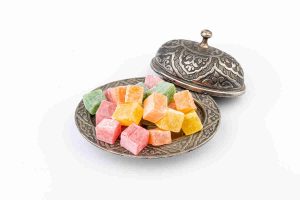As we have told in other posts in this blog, the history of Turkey is present in many aspects of Western culture, as surprising as it may seem: the Trojan horse or the place where Noah’s Ark ran aground are some examples of this. But there are many more. And in this post we dwell on the surprising relationship between the scroll and Pergamon, an ancient city located in the current Turkish territory. We tell you about it.
A name that gives away, but deceives
When reading the word parchment and understanding its original meaning (from the Latin pergamīnum, that is, “from Pergamon”), one might think that parchment was invented in Pergamon. But this is not so: parchment receives this name because in this city was located the producing industry where this product reached the highest quality, and by extension began to use that term from several centuries before Christ.
However, it is known that parchment was used earlier in other parts of the world, particularly in Ancient Egypt. Moreover, its origins seem to be in the Far East. However, parchment brought worldwide fame to Pergamon, supported by Eumenes II and the Library of Pergamon, one of the largest in antiquity, rivaling the largest in the world: that of Alexandria, which based its archives on scrolls made on the alternative, more popular and economical support, i.e. papyrus.
The moment of maximum splendor of parchment took place in the times of the Roman Empire, although it was not until the third or fourth century when it began to significantly displace its great rival, papyrus. By then, the production of parchment was already widespread, and its use in codices (codex), instead of scrolls, was gaining more and more ground.
Parchment vs. papyrus and paper: materials and relationship
As we were saying, the parchment ended up displacing the papyrus for its higher quality and durability. The parchment is a support made from stretched animal skin, especially lamb and other species, especially of very young or even unborn individuals. To do this, the skin must be worked until only the dermis is left, the layer on which the actual writing was done.
Papyrus, on the other hand, was made from the Cyperus papyrus plant and, being vegetable fibers, was more sensitive to breakage and deterioration in general. In addition, parchment allowed writing on both sides, something that was not possible in good conditions in papyrus.
But at the same time, parchment had to coexist with another fundamental support: paper. Although its invention is limited to China in the second century AD, the Arabs knew the paper technique, based on tree wood pulp, and spread it throughout the rest of the world from the eighth century onwards. In this way, parchment was relegated to special uses, for books of higher quality and significance, leaving paper for more common books.
Scrolls in today’s Bergama
The refined parchment industry is a source of pride for the citizens of Bergama, the later city that arose in the lower part of ancient Pergamon. But references to it are scarce, both in the archaeological site of the acropolis and in the Archaeological Museum of Bergama, where the history of this city is treated in depth.
In any case, if you visit the archaeological site of Pergamon with a qualified guide, he will surely be able to tell you interesting details about the production workshops of this material, or if you explore the stores of the city you may be able to get your hands on some handmade article inspired by this support that made the city famous worldwide.



